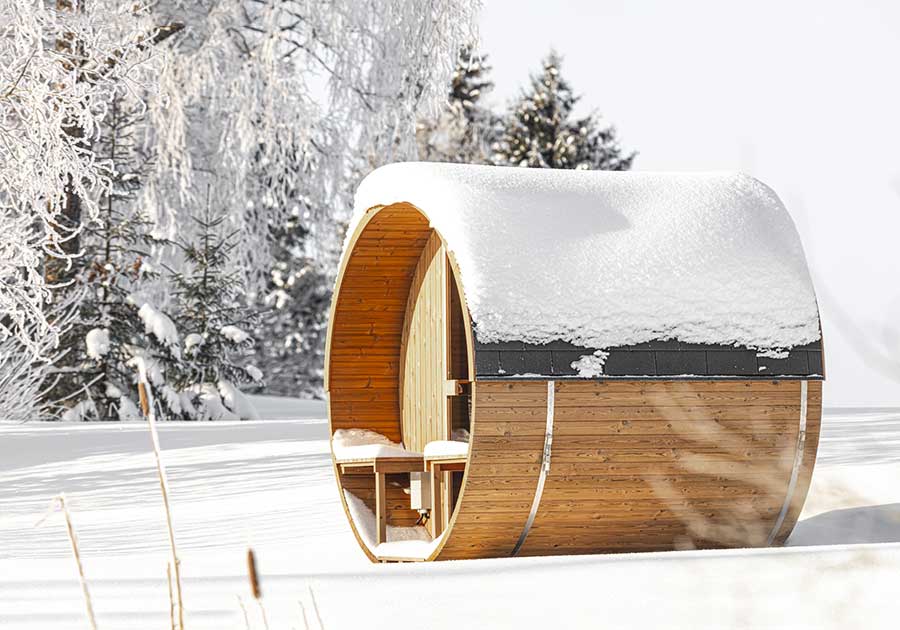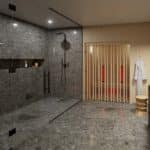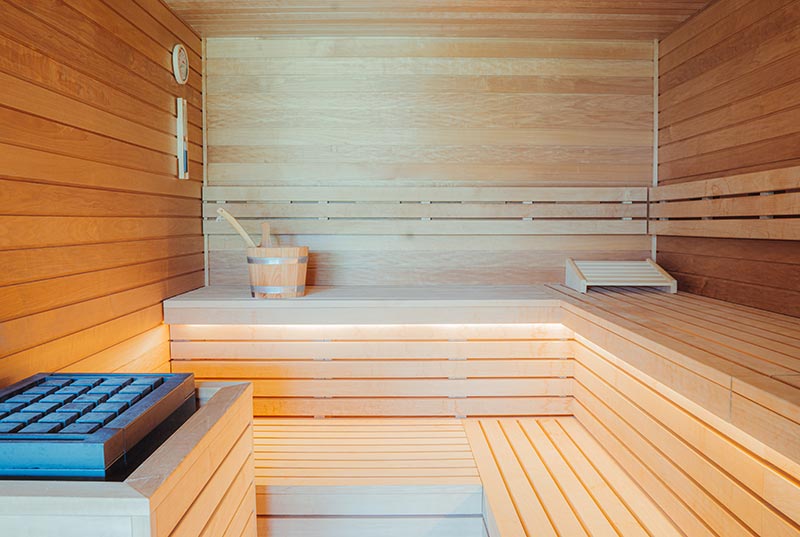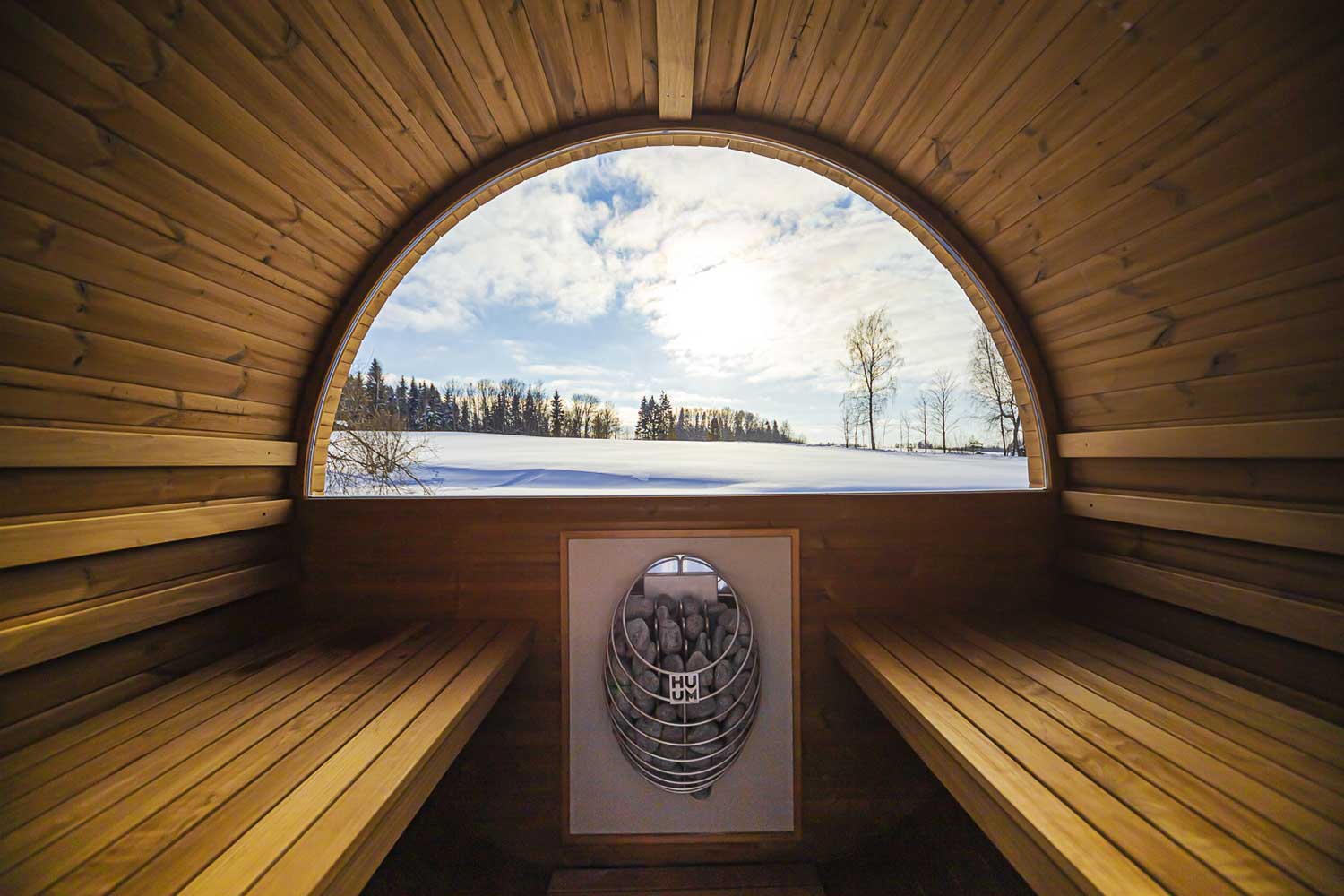Infrared sauna or traditional sauna: which to choose?
Want to treat yourself toa sauna ? There are two main options: traditional or infrared. But which model should you choose? How they work, their benefits, how a session unfolds, power consumption, price… Find out the main differences in this article!

What are the differences between an infrared sauna and a traditional sauna?
To choose between an infrared sauna and a traditional sauna, you need to know the difference between the two. Even if the final objective is the same (to relax you), their characteristics differ. Here’s the lowdown!
How it works
Traditional sauna
The traditional Finnish sauna is the best option for sauna purists. Indeed, there’s nothing like a steam sauna to put you in the shoes of a true Nordic! It conveys values that have been perpetuated for over 2000 years in Scandinavian countries.
The cabin is made of wood, usually red cedar, pine or Nordic spruce. A stove (electric or wood-burning) heats the volcanic stones. The stones are then sprinkled with water to produce steam.
As a result, the ambient air temperature rises, warming the whole body. In a traditional sauna, the temperature is high, reaching up to 110°C. Because of the water vapor, the humidity level is also high: up to 25%!
Infrared sauna
More recent than the traditional sauna, the infrared sauna comes to us straight from Japan. It uses infrared emitters rather than stoves to generate heat. Depending on the model, these may be made of quartz, carbon, ceramic or magnesium.
These emitters heat the body directly, via reflector panels mounted on the cabin walls. To do this, they emit infrared radiation similar to that of the sun (without UV emissions). The entire cabin is heated evenly, unlike a conventional sauna.
What’s more, this technology offers a gentler temperature inside the cabin, not exceeding 80°C. The heat is also much drier, as there is no steam. If you find it difficult to tolerate the humid (and sometimes stifling) heat of a traditional sauna, the infrared option is the way to go.
Health benefits
Traditional sauna
The traditional sauna offers numerous health benefits, thanks in particular to the steam produced. It allows you to :
- Relieve muscle pain;
- Stimulate blood circulation:
- Eliminate toxins and deeply cleanse the skin;
- Boost your immune system;
- Get rid of stress;
- Better sleep.
Infrared sauna
Infrared saunas are said to sweat 3 to 6 times more than conventional saunas. This intense sweating has several benefits:
- Eliminate toxins and fight dermatological diseases;
- Strengthening the immune system ;
- Improves skin quality and eliminates cellulite;
- Stimulation of blood circulation ;
- Stress relief.
What’s more, the heat is lower and therefore more bearable. It also puts less strain on the heart.
How a sauna session works
Traditional sauna
Traditionally, a session in a steam sauna consists of alternating hot and cold. This maximizes the benefits:
- An initial treatment lasting 8 to 10 minutes, allowing the body to gently acclimatize to the heat;
- A cold shower for a few seconds, followed by a moment of rest, wrapped up in a bathrobe;
- A second visit to the sauna, this time for 10 to 15 minutes;
- Repeat these steps a total of 3 times, for no more than 15 minutes per session!
Infrared sauna
In an infrared sauna, the heat is lower than in a traditional sauna. This means you can enjoy longer sessions and sweat more. We even recommend it!
To reap the full benefits, we recommend a 30-45 minute session. 2 to 3 times a week, if possible.
You should then end the session with a lukewarm shower. As the infrared sauna does not overheat the body, there is no need to take a cold shower.
Energy consumption
Traditional sauna
The traditional sauna requires a lot of electricity. Consumption ranges from 3500 to 8000 W, depending on the model chosen.
Infrared sauna
Infrared saunas are more energy-efficient. Power consumption is estimated at between 1200 and 3000 W, depending on the model chosen.
Price
Traditional sauna
The price of a traditional sauna is quite high: expect to pay €10,000 on average for a quality product. But for an outdoor Finnish sauna, the price can go up to €15,000. It all depends on the materials used, the number of seats and the accessories.
Infrared sauna
Less expensive than a traditional sauna, the infrared sauna is an economical alternative. Prices start at €8000. Over time, it will also cost less to run.

Infrared vs traditional: which is the best type of sauna?
In conclusion, there’s no best choice between infrared and traditional saunas. It will depend on a number of factors, including your desires and your budget.
Infrared saunas are more economical, as the heat is dry and causes superior sweating. Steam saunas are more expensive, but offer the invigorating benefits of a true Nordic sauna session.
In both cases, the benefits are quite similar, beneficial for both body and mind. The aim is also the same: to relax and release the tensions of everyday life.











